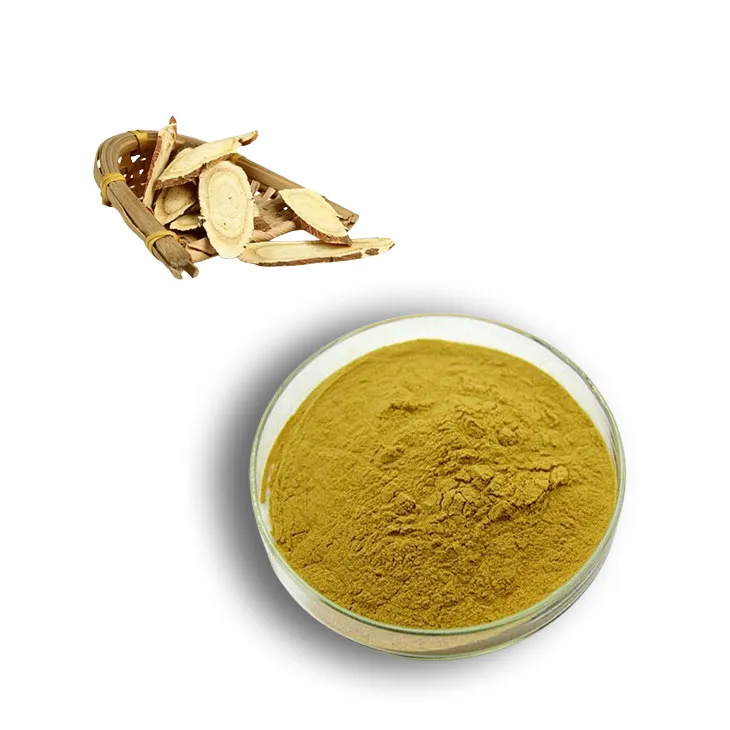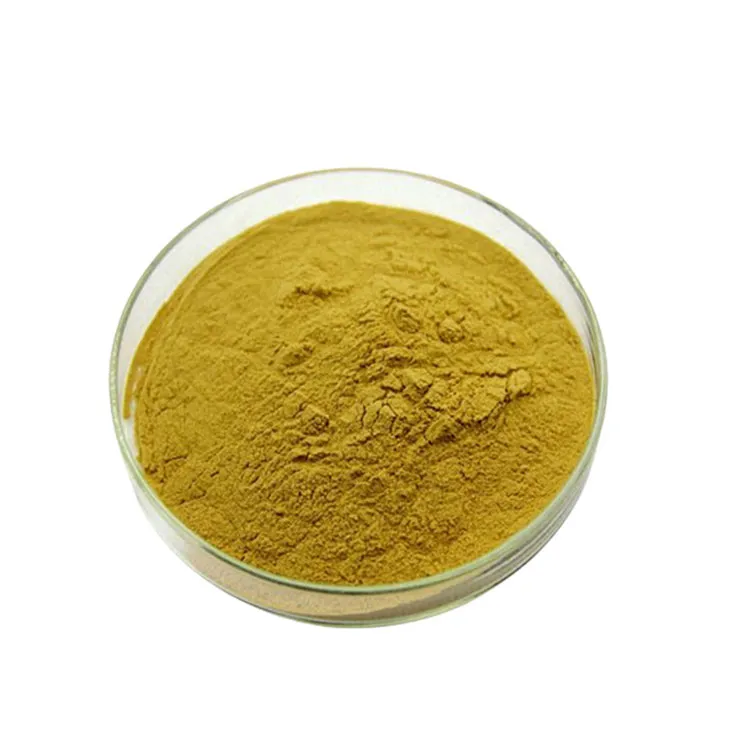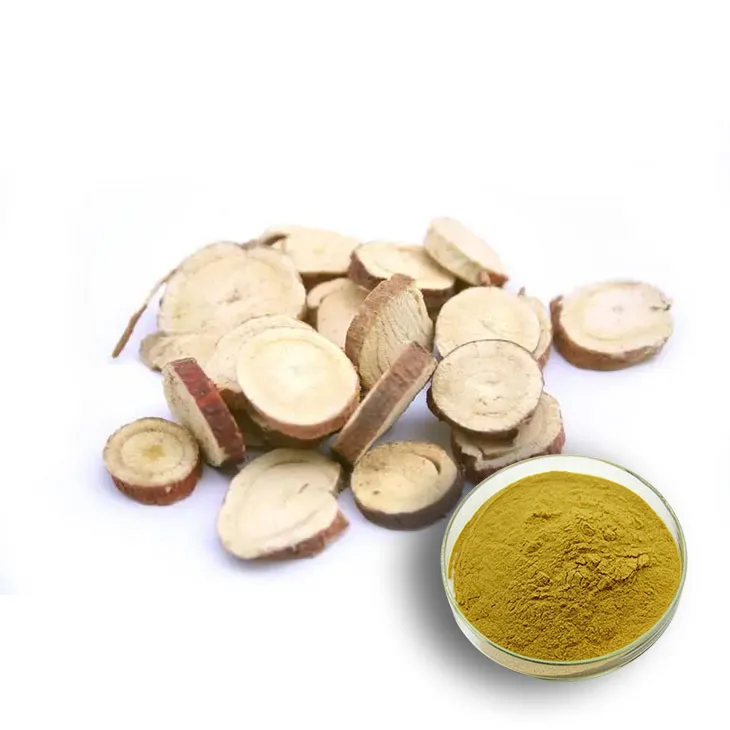- 0086-571-85302990
- sales@greenskybio.com
Extract licorice root extract powder by steam distillation.
2024-11-27

1. Introduction
Licorice root has been used in traditional medicine for centuries due to its numerous health - promoting properties. It contains a variety of bioactive compounds such as glycyrrhizic acid, flavonoids, and polysaccharides. Steam distillation is one of the effective methods for extracting valuable substances from licorice root to obtain Licorice Root Extract Powder. This extraction method not only helps in isolating the active components but also has the potential to preserve their biological activities.

2. Selection of High - Quality Licorice Roots
The quality of licorice roots is crucial for obtaining a high - quality extract powder.
2.1. Source
Licorice roots are mainly sourced from different regions around the world. For example, in China, the Xinjiang region is known for producing high - quality licorice. The environmental conditions such as soil type, climate, and altitude in the source area can significantly affect the composition of the licorice roots. Soil rich in nutrients and a suitable climate with adequate sunlight and rainfall tend to produce licorice roots with a higher content of bioactive compounds.
2.2. Appearance and Texture
High - quality licorice roots usually have a certain appearance and texture. They should be firm, with a smooth surface, and free from obvious signs of decay or damage. The color of the roots can also be an indicator of quality. Generally, a darker color may suggest a higher content of certain bioactive components, but this is not the sole determinant.

3. Steam Distillation Process
The steam distillation process for extracting Licorice Root Extract Powder involves several important steps.
3.1. Preparation of Licorice Roots
First, the selected licorice roots need to be thoroughly washed to remove dirt, sand, and other impurities. After washing, they are usually cut into small pieces or ground into a coarse powder. This increases the surface area exposed to steam during the distillation process, facilitating the extraction of bioactive compounds.
3.2. Setting up the Steam Distillation Apparatus
A typical steam distillation apparatus consists of a distillation flask, a condenser, a receiver, and a heat source. The licorice root material is placed in the distillation flask. Water is added to the flask if a hydro - distillation method is used. The condenser is connected to the distillation flask to cool down the vaporized components, and the receiver is used to collect the distillate.
3.3. The Distillation Process
Heat is applied to the distillation flask. As the temperature rises, steam is generated. The steam passes through the licorice root material, carrying with it the volatile bioactive compounds. These compounds are then vaporized and carried along with the steam into the condenser. In the condenser, the steam is cooled down and condensed back into a liquid form. The distillation process usually takes a certain amount of time, which can range from several hours to a day depending on the amount of licorice root material and the desired extraction efficiency.

4. Factors Affecting the Composition and Functionality of the Extract
During the steam distillation process, several parameters can have a significant impact on the composition and functionality of the licorice root extract.
4.1. Temperature
The temperature during distillation is a critical factor. If the temperature is too low, the extraction of volatile compounds may be incomplete. However, if the temperature is too high, it may lead to the degradation of some heat - sensitive bioactive compounds. For example, glycyrrhizic acid may start to decompose at relatively high temperatures. Therefore, it is necessary to carefully control the distillation temperature to ensure the optimal extraction of bioactive compounds while maintaining their integrity.
4.2. Pressure
Pressure can also influence the steam distillation process. Lower pressure can lower the boiling point of water and other volatile components, which may change the extraction efficiency and the composition of the extract. By adjusting the pressure, it is possible to selectively extract certain compounds that are more volatile under specific pressure conditions.
4.3. Distillation Time
The length of the distillation time affects the quantity and quality of the extract. A longer distillation time may increase the yield of the extract, but it may also introduce more impurities or cause the degradation of some compounds. On the other hand, a too - short distillation time may result in incomplete extraction. Therefore, finding the optimal distillation time is essential for obtaining a high - quality licorice root extract powder.

5. Post - distillation Processing
After the steam distillation, the collected distillate needs to be further processed to obtain the licorice root extract powder.
5.1. Separation of the Extract
The distillate usually contains the extracted bioactive compounds along with water and other impurities. Techniques such as filtration and centrifugation can be used to separate the extract from the water and impurities. Filtration through a fine filter can remove large particles, and centrifugation can further separate the remaining suspended particles.
5.2. Drying
After separation, the extract is in a liquid form. To obtain the powder form, drying is required. There are different drying methods available, such as air drying, vacuum drying, and freeze - drying. Vacuum drying and freeze - drying are more commonly used as they can better preserve the biological activities of the bioactive compounds. Freeze - drying, in particular, can minimize the damage to the structure of the compounds during the drying process.
6. Future Prospects of Licorice Root Extract Powder in Different Fields
Licorice root extract powder has a wide range of potential applications in various fields.
6.1. Pharmaceutical Industry
In the pharmaceutical industry, licorice root extract powder can be used as an ingredient in drugs. Its anti - inflammatory, anti - viral, and anti - ulcer properties make it a valuable component in the development of medications for treating various diseases. For example, glycyrrhizic acid has been shown to have potential in treating hepatitis due to its anti - viral activity.
6.2. Cosmetics Industry
In the cosmetics industry, the extract powder can be incorporated into skincare products. The flavonoids and polysaccharides in licorice root extract have antioxidant and moisturizing properties. They can help in reducing wrinkles, improving skin elasticity, and protecting the skin from environmental damage. Many high - end skincare products are already using licorice root extract powder as an active ingredient.
6.3. Food Industry
In the food industry, licorice root extract powder can be used as a natural flavor enhancer and sweetener. It can add a unique flavor to food products while also providing some potential health benefits. However, due to its strong flavor, it needs to be used in moderation to avoid overpowering the taste of the food.
7. Conclusion
Steam distillation is an effective method for extracting licorice root extract powder. By carefully selecting high - quality licorice roots and controlling the distillation parameters such as temperature, pressure, and time, it is possible to obtain a high - quality extract powder rich in bioactive compounds. The licorice root extract powder has great potential in the pharmaceutical, cosmetics, and food industries. However, further research is still needed to fully explore its properties and optimize the extraction and application processes.
FAQ:
What are the main bioactive compounds in licorice root?
There are several main bioactive compounds in licorice root. Glycyrrhizic acid is one of the most important ones, which has anti - inflammatory, antiviral and antioxidant properties. Flavonoids are also present, contributing to antioxidant activities. Additionally, there are saponins which may have various biological effects.
How to select high - quality licorice roots for steam distillation?
When selecting licorice roots for steam distillation, several factors should be considered. Firstly, look for roots that are intact and not damaged or rotten. The color should be relatively uniform, usually a light - brownish to yellowish - brown color. The texture should be firm. Also, it is advisable to source from reliable suppliers to ensure that the licorice roots are of a known species and origin, as different species may have different compound profiles.
What are the detailed steps of steam distillation for extracting licorice root extract powder?
First, the selected licorice roots are cleaned and cut into appropriate pieces. Then, they are placed in a distillation apparatus. Steam is introduced into the apparatus. As the steam passes through the licorice root pieces, it causes the volatile compounds to vaporize. These vapors are then condensed and collected. After that, the collected liquid is further processed, such as through evaporation to obtain the extract powder.
How do different distillation parameters affect the composition of the licorice root extract?
The temperature during steam distillation is a crucial parameter. Higher temperatures may lead to the degradation of some heat - sensitive compounds, while lower temperatures may not efficiently extract all the desired compounds. The duration of distillation also matters. Longer distillation times may result in over - extraction of some compounds and potential contamination with unwanted substances. The pressure in the distillation system can also influence the extraction efficiency and the types of compounds that are vaporized and collected.
What are the potential applications of licorice root extract powder in different fields?
In the pharmaceutical field, it can be used for its anti - inflammatory and antiviral properties. In the cosmetic industry, it can be added to products for its antioxidant and skin - soothing effects. In the food industry, it can be used as a natural flavor enhancer and preservative due to its unique taste and some antimicrobial properties.
Related literature
- Steam Distillation of Bioactive Compounds from Medicinal Plants: A Review"
- "Optimization of Steam Distillation Process for Extracting Valuable Compounds from Licorice Root"
- "The Bioactive Compounds in Licorice Root and Their Extraction Methods"
- ▶ Hesperidin
- ▶ citrus bioflavonoids
- ▶ plant extract
- ▶ lycopene
- ▶ Diosmin
- ▶ Grape seed extract
- ▶ Sea buckthorn Juice Powder
- ▶ Beetroot powder
- ▶ Hops Extract
- ▶ Artichoke Extract
- ▶ Reishi mushroom extract
- ▶ Astaxanthin
- ▶ Green Tea Extract
- ▶ Curcumin Extract
- ▶ Horse Chestnut Extract
- ▶ Other Problems
- ▶ Boswellia Serrata Extract
- ▶ Resveratrol Extract
- ▶ Marigold Extract
- ▶ Grape Leaf Extract
- ▶ blog3
- ▶ blog4
-
Organic Vitamin B9 Powder Factory.
2024-11-27
-
Chinese Dandelion Root Extract Factories.
2024-11-27
-
Bulk purchase of okra extract.
2024-11-27
-
Chinese melatonin factories.
2024-11-27
-
Certified organic kidney bean extract.
2024-11-27
-
Uridine-5'-monophosphate Disodium salt
2024-11-27
-
Thunder God Vine Extract
2024-11-27
-
Grape Seed Extract
2024-11-27
-
Eucommia Ulmoides Extract
2024-11-27
-
Rose Hip Extract
2024-11-27
-
Artichoke Leaf Extract
2024-11-27
-
Lemon Extract
2024-11-27
-
Pine bark Extract Powder
2024-11-27
-
Tamarind extract powder
2024-11-27
-
Cactus Extract
2024-11-27





















